![]() Get best deals. Reserve a table now.
Get best deals. Reserve a table now.
![]() 452 Block F1 Johar Town, Lahore, Pakistan
452 Block F1 Johar Town, Lahore, Pakistan
- August 5, 2022
- By shaggysthefoodvilla
- 0 Comments
Kheer – Rice Pudding
Often, she would reply ‘Yes, we have kheer/halwa/sawaiyan/gajrela/xyz Desi dessert in the fridge’ and I would sigh, wishing there was a decadent slice of chocolate cake waiting for me instead. I still would like a decadent slice of chocolate cake, mind you, but now a serving of kheer magically sounds a lot more appealing than it did before.
In fact, sometimes, a hot bowl of kheer becomes a raging craving on a rainy day.
I think this maturing in taste buds is a rite of passage – a part of growing up. It sometimes gets you by surprise. You’ll be on your own on a Friday night after work and can order out ANYTHING that comes to mind – but all you want is a plate of chicken curry, or a bowl of kheer. It’s an amazing yet humbling thing. I’m certain I’m not the only one who has learnt just how amazing the food of their own culture is after they left home.
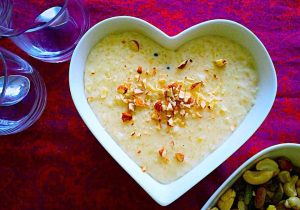
For this kheer, I’ve written down the simple route, using only milk and sugar. Some people also use saffron, vanilla, cinnamon etc for a kick of flavour. Those variations all taste fantastic, but today I’d like to share with you the classic, basic and simple elaichi (cardamom) flavoured kheer I’ve grown up eating.
What is Kheer? How is it made?
Kheer is generally what’s known as rice pudding in India and Pakistan. It’s a classic Desi dessert made with loads of milk slowly simmered down into a cream alongside rice and sugar.
A variation of this dessert is gajar ki kheer, which is rice pudding cooked with grated carrots – think a cross between regular kheer and gajar ka halwa!
It’s very similar to another dessert called firni. The only difference between kheer and firni is that kheer is made with whole grains of rice, whereas firni is made with ground rice and is therefore smoother.
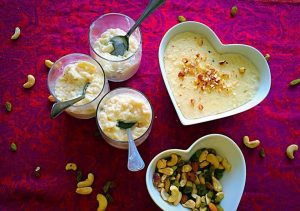
What makes a good Kheer?
- LOADS of milky, creamy goodness. This is NOT the time to be using skim milk! Get in there with the good stuff, the full fat milk!
- The texture of the rice kheer should be that of lightly mashed rice. The rice shouldn’t be completely intact, but it also shouldn’t be complete baby food mush. Something in the middle
- A strong hit of cardamom flavour is, in my opinion, the hallmark of kheer
- A heavy garnishing of crunchy nuts before serving
Ingredients
- 5 cups (1 ¼ l) full-fat milk
- ½ cup (100 g) basmati rice
- 5 pods cardamom seeds elaich
Instructions
-
-
Pour the milk into a pot and bring to a soft simmer on medium heat
-
Whilst the milk is heating, put the pods of cardamom seeds into a plastic bag and beat them with a rolling pin till the black seeds from inside the pod are released, as shown in the picture. Discard the skins
-
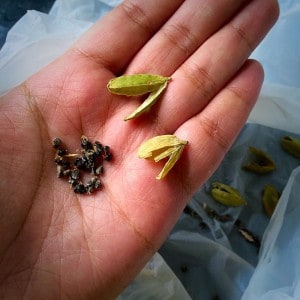
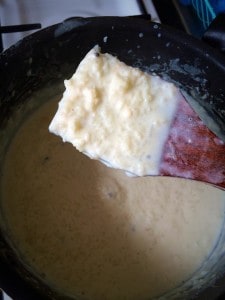
Categories
Popular Post
Archives
Copyright © July, 2021 Shaggys The Food Villa. All Rights Reserved.

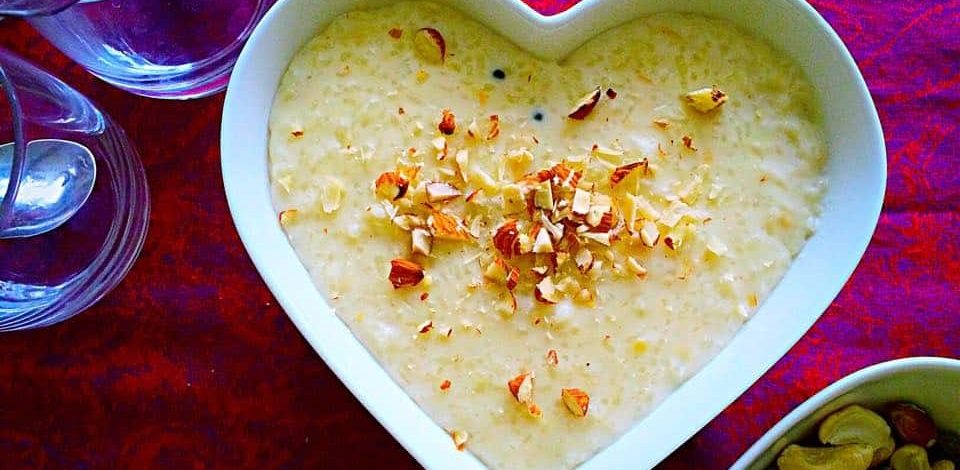
Leave A Comment